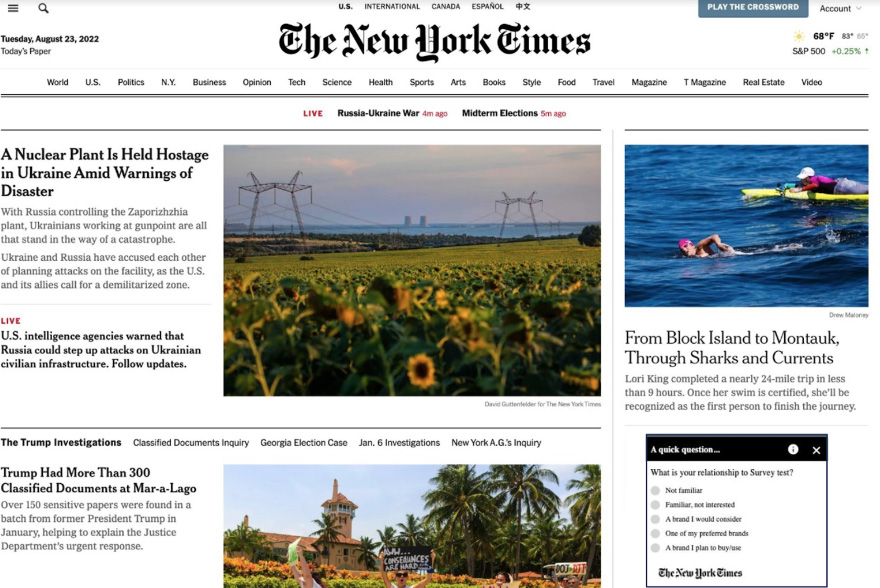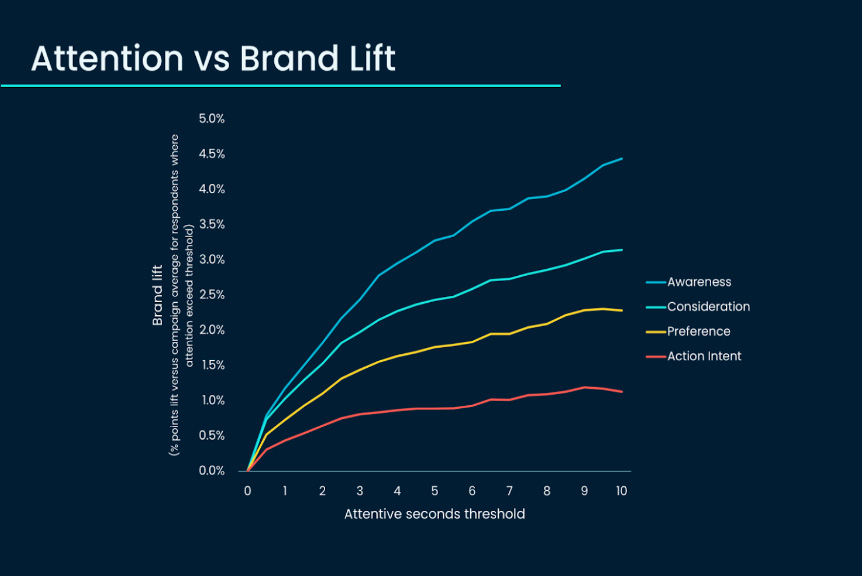Time to pay attention to attention

Opinion, by Mike Follett
Aggregate attention time matters. It’s astonishing that some in our industry still don’t take attention time seriously.
The recent release of attention-to-intention data from Havas Media Network, Lumen Research and Brand Metrics is a major milestone in our understanding of how advertising actually works. It provides fresh perspectives on age-old questions, but also suggests new avenues for future research.
But it is especially useful in answering one old advertising chestnut in particular: the true value of attention time.
Everyone who works on the topic of attention agrees that ads need attention to work; unseen is unsold. But how much attention is required for an individual ad to work? Does doubling the attentive seconds mean doubling the desired outcome? Is there a minimum threshold underneath which ads can’t be expected to do their job? Does this change depending on the task at hand?
There has been much debate on these questions. There are some, like Dr Karen Nelson-Field, who have argued strenuously for a “more is more” approach to advertising attention, highlighting the relationship between video ads that receive at least 2.5 seconds of attention time and memory formation.
There are others, usually lacking Nelson-Field’s intellectual sophistication or empirical dataset, who say that time doesn’t matter. Posters can “work” with a second of attention; cinema ads get the job done in a minute.
If both things can be true, then attention time can’t be that important.
But Nelson-Field is right: time matters. The Havas/Lumen/Brand Metrics dataset shows that attention time is of first importance in understanding how advertising works and, indeed, making advertising work.
And we can add a new insight. Aggregate attention time is the key performance indicator that advertisers should be targeting.
Combining attention and brand lift
We can only get to answers like this by combining two unique, and uniquely powerful, datasets: the Lumen attention prediction model and the Brand Metrics brand-lift database.
Lumen has collected attention data from over 650,000 individuals across thousands of sites and hundreds of ad formats. From this dataset, we have been able to create a predictive model of attention based on viewability signals. If you can tell us things like the size and shape of an ad, and how long it is on screen for, then we can give you an estimate of how likely the ad will be looked at and for how long.
Brand Metrics does brand lift differently. Instead of recruiting a massive panel of respondents and waiting until their devices are hit with a brand’s ad to trigger a questionnaire, Brand Metrics integrates its tech with publishers.
The publisher serves four or five ads to the same IP address, collecting detailed viewability data on each. And then instead of serving, say, a sixth ad, it will serve the Brand Metrics survey within the banner space.
To get any response at all from readers, Brand Metrics has to keep its questionnaire very simple: one consistent, multiple-choice question that the reader can answer with a single click.
Respondents are asked if they are aware of a particular brand, or have it in their consideration set, or if it is one of their preferred brands, or one that they are intending to buy — the answers to the former questions being nested in responses to the latter. But from such simplicity and consistency comes great power.

Brand Metrics is integrated with over 5,000 publisher domains in 19 countries. It has conducted over 35,000 brand-lift studies, involving over 8m individuals. To keep things simple, we have elected to investigate a mere 9,089 studies, among 1.8m respondents who were exposed to 5.6m display ads (we will publish data on video ads later this year).
For each impression a respondent receives, we have extremely accurate viewability data (including viewable time data, which is crucial to estimating attention time) and frequency data (vital for understanding the aggregate attention time for each respondent).
This allows us to understand the relationship between attention, memory and intention at a very granular level.
Attention leads to intention
And the results are clear: increases in attention time leads to increases in awareness, consideration, preference and intent. We already know that unseen is unsold; now we can say that more attention leads to more intention.
But it is aggregate time that matters. Almost none of the display ads in the study achieved 10 seconds of estimated attention on its own. The average estimated attention for each individual ad was less than 0.8 second.
Thanks to Brand Metrics’ frequency data, we can count up all the impressions a respondent was exposed to and estimate the aggregate attention that they gave to an advertiser.

Aggregate attention drives results
When you look at this combined, composite, aggregated attention, you can begin to answer the questions we posed at the start.
Is more attention always better for brands? Yes, although there are diminishing returns to increases in attention.
How much attention is required for an ad to work? Well, it depends on what you mean by “work”.
If you want to increase top-of-mind awareness by 1%, perhaps you only need a second (although this will vary greatly by brand size and creative excellence). But if you want to increase preference by 1%, then perhaps you need two seconds. And if you want to drive the same change in purchase intent, then perhaps you need 10.
Is there a minimum attention threshold under which ads are useless? Sort of. Additional analysis in the Havas report highlights that if each of your display ads receives less than 0.5 seconds of attention, then no amount of aggregation will result in increases in awareness, consideration, preference or purchase intent.
But, as long as your ads beat this minimum, then it is the aggregate volume of attention that is decisive in driving results. It is the sum, rather than the parts, that matters most.
More to come
As creatures who perforce have to live in the fourth dimension, it is unsurprising that time should be so important. It would be truly astounding if it wasn’t important — and it is genuinely astonishing that some people in our industry think it isn’t. Only unserious people don’t take time seriously.
But answering one serious question only invites more. The data we have shared relates to digital display advertising. What about digital video? Or ads in other media? Or ads across multiple media? What’s the impact of creative or context or the congruency between the two? Does category matter? Or country? Or audience?
Once again, we are at the start of something, rather than the end, as we have more research to come in the months ahead. So watch this space.
The adventure of attention continues.
 Mike Follett is the global CEO of Lumen Research and one of the media industry’s leading experts on attention measurement and effectiveness.
Mike Follett is the global CEO of Lumen Research and one of the media industry’s leading experts on attention measurement and effectiveness.
Read more

Make fewer ads: Why the future of advertising depends on better data strategies
There’s a misconception that planning fewer ads in order to reduce waste will lead to poorer results. But with intelligent modelling, strategic data partnerships and more metrics available, we can make ads more efficient and more effective.

À lire plus tard
Vous devez être inscrit pour ajouter cet article à votre liste de lecture
S'inscrire Déjà inscrit ? Connectez-vous








